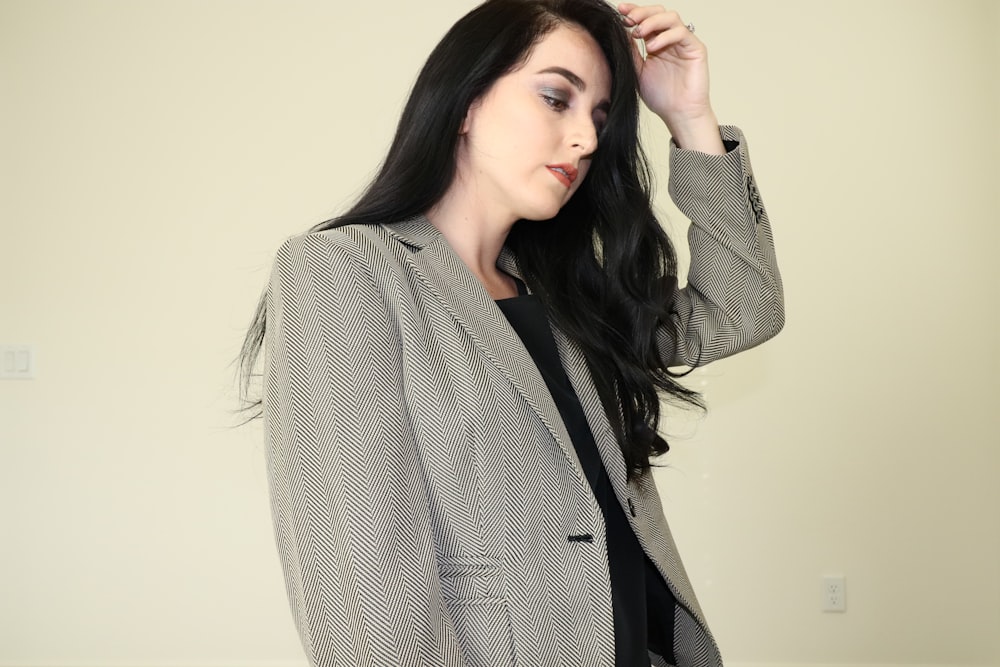Cover photo by Andriyko Podilnyk on Unsplash
Written by Camilla Rees of The Love Brain
Has your partner ever done something that reminded you of a bad experience from a past relationship?
I can probably guess the rest of the story. You felt your nervous system kick in. You put your walls back up. Your partner got confused. You didn’t know how to talk about it. You both went to bed upset.
I know this story too.
We all have emotional baggage, whether it’s from our parents or romantic relationships. Negative experiences in past relationships can really mess us up.

Let’s list the ways, shall we?
-
-
Trusting is scary
-
Vulnerability is scary
-
Apologizing is hard
-
Forgiveness is hard
-
Feeling deserving of love is hard
-
Feeling lovable is hard
-
You project onto your partner, a lot
-
You compare yourself or your partner
-
You build walls
-
You teach yourself to expect the worst
-
You create unhealthy or unrealistic expectations for your partner
-
You don’t trust your own judgement
-
I know I’ve missed some.
This is what we do when we have relationship baggage. We feel fragile, and we do unhealthy things to protect ourselves.

Relationship researchers have a consensus that most people with negative past relationship experiences fear that they will never feel close enough to their new partner while simultaneously fearing getting too close in the same relationship.
How interesting is it that what we desire most (emotional closeness) we also fear the most?
This fear comes from those negative relationship experiences. In my interpretation, the fear of vulnerability is born of a broken heart.
We create core issues from negative relationship experiences. Core issues can be fears, insecurities, unhealthy expectations, assumptions, trauma, unmet needs, or betrayed values.
At the beginning of my relationship with my husband, we argued almost every day thanks to my fragile ego and his limited experience with healthy love. It took time for us to work through our core issues which, surprise surprise, had nothing to do with each other and everything to do with our own emotional baggage. All of our arguments were rooted in the fact that I had a laundry list of insecurities shaped by my past and my husband kept getting triggered by his relationship trauma.
So if you’re feeling fragile, you’re not alone. Let’s talk about what we can do with that heavy baggage you’re carrying.

5 Tips to Not Let Past Relationships Affect New Ones
Realistically, unresolved wounds from past relationships just take time to heal. We can’t make them disappear at the snap of our fingers, but here’s how we can get started:
1. Acknowledge your contribution to failed relationships
Be curious about the past. There are two sides to every story. Recognize your past toxic behaviors.
-
What behaviors of yours seem to be a pattern in your relationships?
-
What things did you do in your past relationships that you don’t want to repeat?

2. Recognize triggers
-
Become an observer. Objectively, was your partner’s behavior mean-spirited?
-
What behavior or comment specifically started up your nervous system?
-
How can you process this trigger in a healthier way?
3. Get to your core issues
-
Reflect on your trigger. Was it shaped from a past relationship?
-
Reflect on your pain. Why did it hurt so much?
-
Reflect on your resentment. Which of your values did their/your behavior go against?
-
Reflect on your fear. What are you really afraid of?
-
Therapy is an awesome tool for this. Therapists can teach you the right questions to ask yourself and guide you down a path of self-awareness and self-reflection.

4. Learn what a healthy relationship can look like
We consciously and subconsciously allow our past relationships to shape our expectations for new ones. We start accepting unhealthy behaviors or we start expecting perfection from ourselves and our partner. We can combat this by:
-
Regularly seeking out relationship education opportunities
-
Research shows that couples who learn healthy relationship expectations and skills are less likely to divorce and have higher marital satisfaction
-
-
Regularly challenge your expectations. Are they healthy? Are they realistic?
-
Ask yourself, “What kind of love do my partner and I deserve?”

5. Communicate with your partner
-
Explain what’s going on for you
-
Validate each other’s feelings
-
Explore your core issues together
-
Very important! Your partner should not be your replacement for a therapist. If you feel like you’re putting that pressure on your partner, see a therapist!

These tips can change the trajectory of your relationship. Here’s how:
A conversation without using one of the 5 tips
Your partner walks in the room and becomes “overly loving” with you, in your definition. They’re complimenting you, hugging and kissing you. Your first thought is, “What are they keeping from me?”. You suddenly feel sad, hurt, and even angry. You push your partner away and roll your eyes.
They ask you what’s wrong. You don’t know what to say, you just feel overwhelmed. Instead you say “Is there something you want to tell me?”. They say, “No, why?”. You don’t believe them, and it’s downhill from there.
But here’s how it would go using tips 2 and 4:
Your partner walks in the room and tells you that you look amazing. They give you a hug and kiss. You think, “I feel like they’re keeping something from me”, but you don’t react to the thought. You smile and say thanks.
They turn on the TV and you start thinking “Why did I get skeptical when my partner was being loving toward me? Have they given me a reason to mistrust them? No. Is there an experience from my past that has given me a reason to mistrust someone who shows me love? Yes, but I’m not in that relationship anymore. I’m safe. In healthy relationships, partners are loving toward each other. That was normal behavior. I’m safe.”

You can do this!
I know, this makes it look easy. It’s not as simple when it’s you! Healthy partners challenge their beliefs and own up to their unhealthy behaviors.
But you can do this. You know how I know? You read this far, and that means you care.
Healthy relationships aren’t perfect, they’re just committed to creating healthy love, just like you. Challenge your beliefs, own up to your unhealthy behaviors, and confront those relationship wounds head on.
Related articles on The Love Brain blog:
3 Reasons Why We Self-Sabotage
FAQ about Finding the One
How to Let Go of the Past and Move on in Your Relationship
How to Overcome Insecurities in a Relationship
How to Communicate Better with Your Partner During Conflict
5 Ways to Build Trust in a Relationship
 This week, write in your journal when you react to a trigger. Write down what triggered you, how it made you feel, what past experience(s) may have formed this trigger, and brainstorm healthier ways you can respond next time it comes up.
This week, write in your journal when you react to a trigger. Write down what triggered you, how it made you feel, what past experience(s) may have formed this trigger, and brainstorm healthier ways you can respond next time it comes up.
References
American Psychological Association. (2004, October 8). Marital Education Programs Help Keep Couples Together. Retrieved December 15, 2020, from https://www.apa.org/research/action/marital
Bernstein, J., Ph.D. (2017, June 9). Three Ways to Break Free of Your Past Relationship Baggage: Letting go of the past and moving on to a healthy relationship. Retrieved December 14, 2020, from https://www.psychologytoday.com/us/blog/liking-the-child-you-love/201706/three-ways-break-free-your-past-relationship-baggage
Ickes, W. (1983). Influences of Past Relationships on Subsequent Ones. Basic Group Processes, 315-337. https://doi.org/10.1007/978-1-4612-5578-9_13


 Camilla Rees is the founder of The Love Brain blog and podcast and a program director for the non-profit organization, the Utah Marriage Commission. After earning a degree in Marriage and Family Relationships from BYU, Camilla has committed herself to providing meaningful knowledge about healthy relationships to as many couples as she can possibly reach. Camilla lives in Utah and enjoys spending time with her husband, Sabe, baby girl, Janie, and little dog, Bowie.
Camilla Rees is the founder of The Love Brain blog and podcast and a program director for the non-profit organization, the Utah Marriage Commission. After earning a degree in Marriage and Family Relationships from BYU, Camilla has committed herself to providing meaningful knowledge about healthy relationships to as many couples as she can possibly reach. Camilla lives in Utah and enjoys spending time with her husband, Sabe, baby girl, Janie, and little dog, Bowie.












